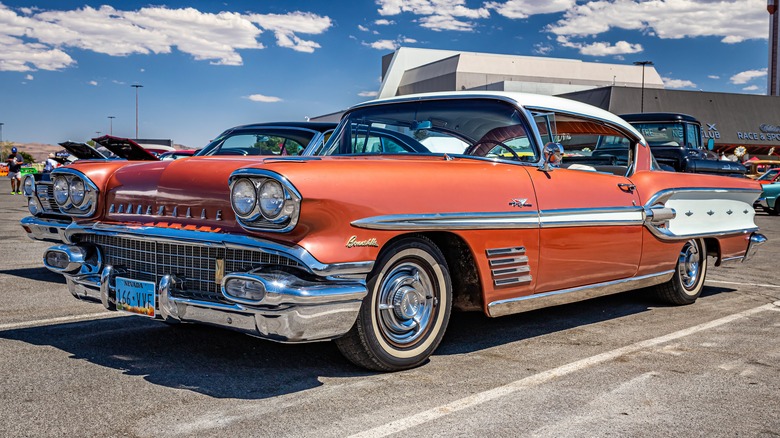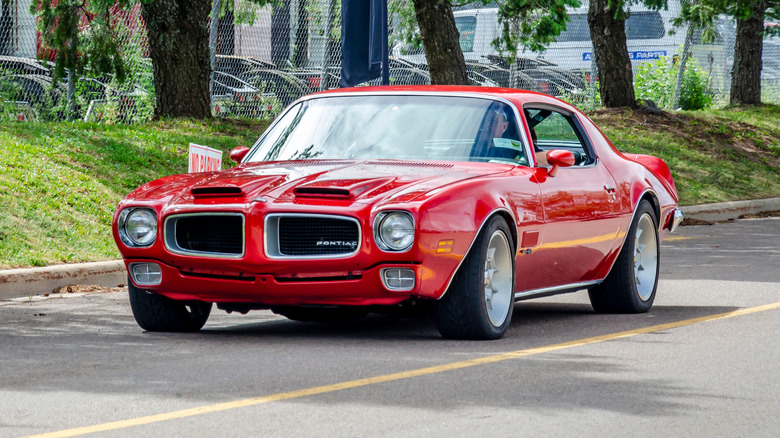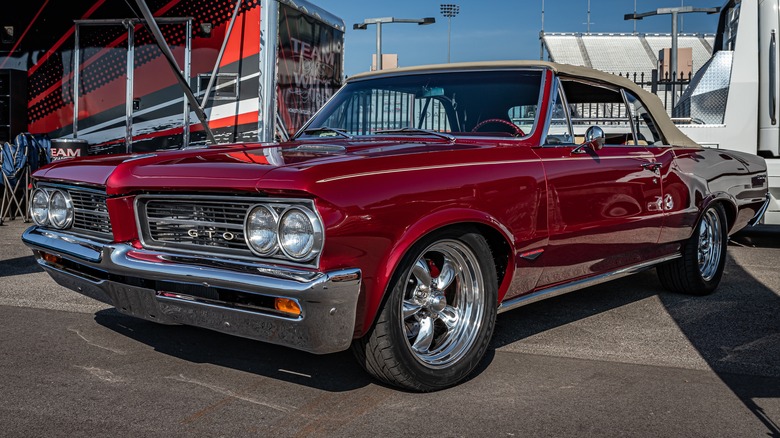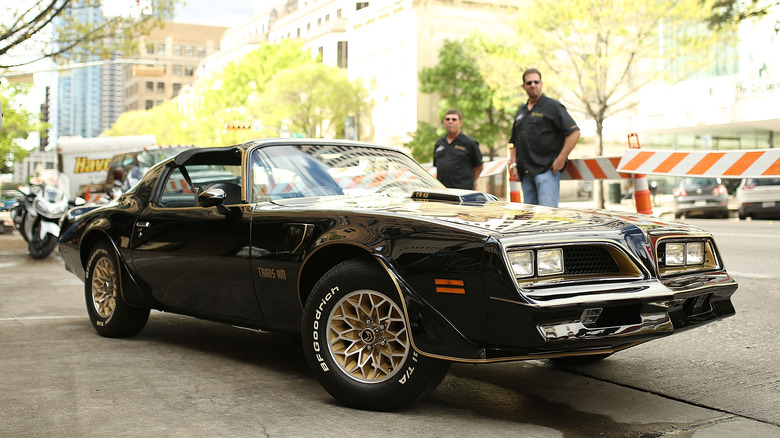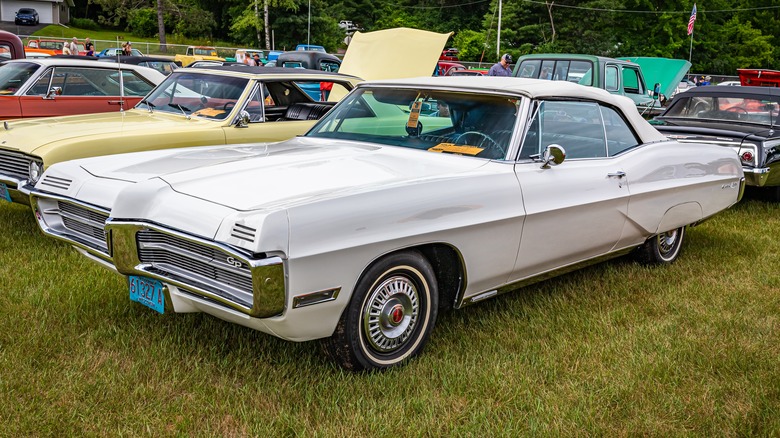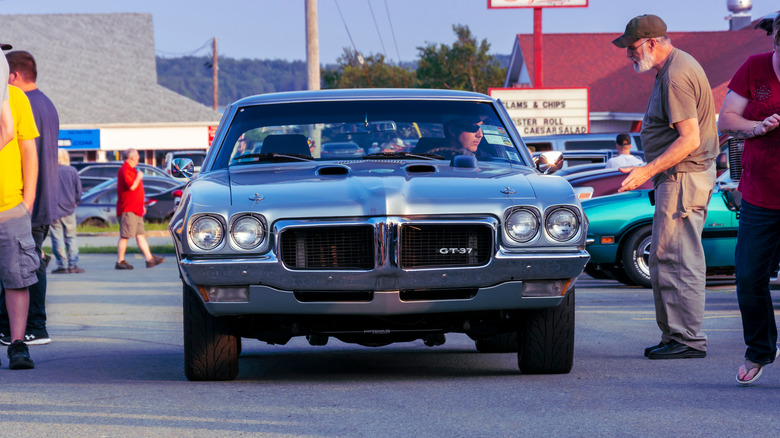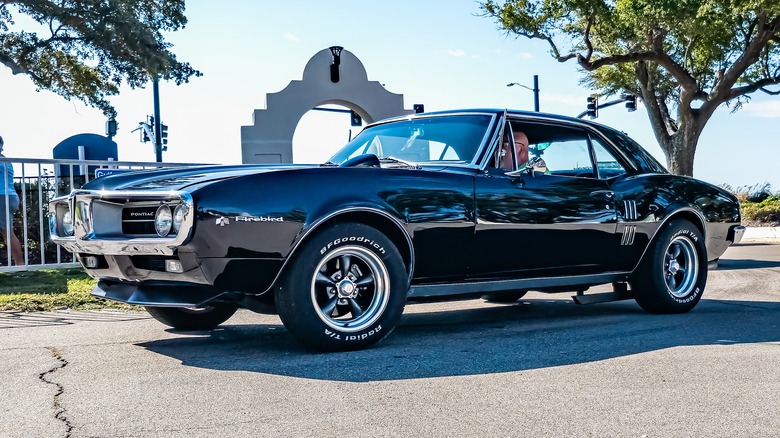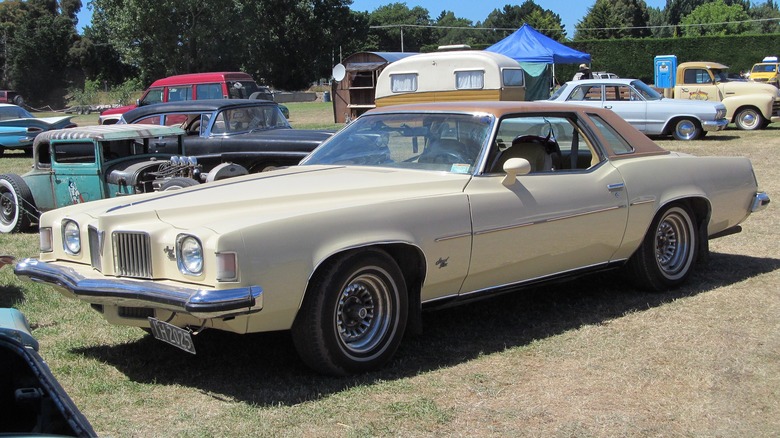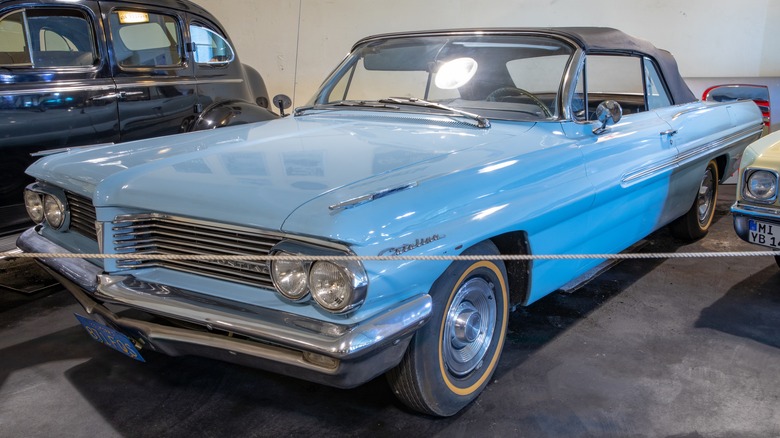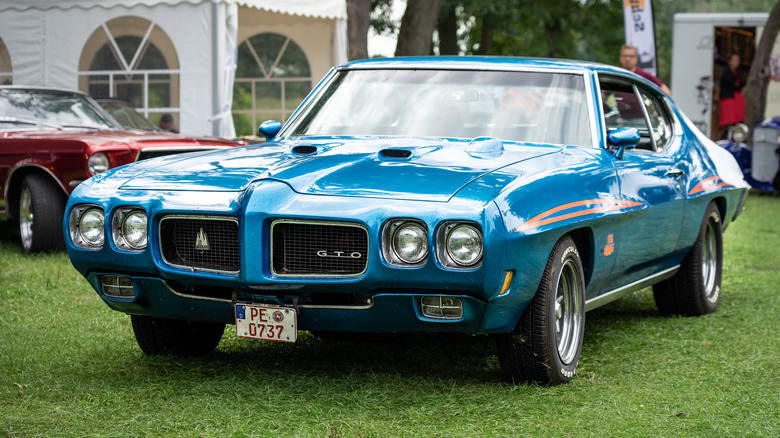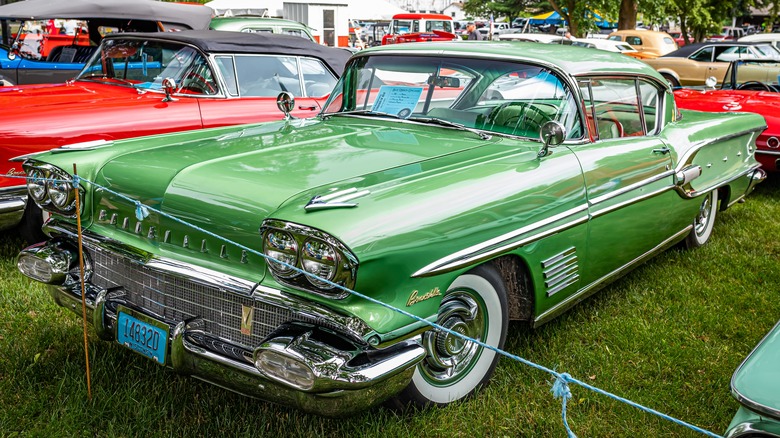10 Classic Pontiac Models Worth Every Penny
Pontiac may no longer be making new cars, but its classics continue to hold a place in the hearts of enthusiasts across America. The brand boasts a slew of famous nameplates from the Bonneville to the GTO, the latter of which is widely credited with establishing the muscle car era. It wasn't always an easy ride for the brand, which saw its lineup stagnate thanks to underinvestment at several periods throughout its existence, but the best models from its glory days are becoming increasingly valuable collectors' grails.
The most sought after Pontiacs now cost hundreds of thousands of dollars, and a couple examples have even crossed the $1 million mark at auction. Those prices put them well out of reach of the majority of Pontiac enthusiasts, but there are still plenty of the brand's iconic cars from decades past that remain attainable. There are far too many noteworthy Pontiac classics to make an exhaustive list of all of them, but each car in this selection of favorites is well worth its current value on the collector market.
Pontiac Firebird '71
The second generation Pontiac Firebird debuted for the 1970 model year, and so only a small number of tweaks were carried out for '71. Both are arguably classics that are worth every penny, but focusing on the '71 Firebird is the key, particularly the 455 HO V8 option with 335 horsepower. New emissions regulations had seen the Firebird's power output limited a little for '71, but it was still a tire shredder in top-spec form.
That V8 was not to be sniffed at, and as a bonus, it was fitted into what's arguably one of the best-looking Firebird model years. Lesser models without that range-topping V8 were no slouch either. Despite its power and good looks, it wasn't much of a sales success at the time. Overall demand for pony cars was falling thanks to new, foreign competition, and sales figures had been below what Pontiac bosses were hoping. There were even rumors that the Firebird line was set to be axed altogether, but thankfully that didn't happen. The car would continue to be produced for several more decades, although few later models arguably matched the styling success of the '71.
Pontiac GTO '64
The '64 Pontiac GTO, or Pontiac Tempest LeMans GTO to use its full name, is one of the most collectible Pontiacs ever built thanks to its reputation as the car that started the muscle car power wars. It was originally conceived as a way to skirt around GM's performance engine ban, being offered as an obscure option on the Tempest since its engine was too large to be allowed as a standalone model. Pontiac executives bet on the fact that buyers would see the GTO option for what it was — essentially, a separate performance model — and they did, buying up the '64 GTO in droves.
Today, the car is far from cheap, but thanks to the model's reputation, most surviving examples will have been looked after well by their owners. Every GTO was fast, since even the standard variant made 325 horsepower, but the Tri-Power 389 engine with its officially quoted 358 horsepower output represented the best Pontiac had to offer.
Pontiac Trans Am '77
While many classic Pontiacs from the '60s and early '70s are collectible thanks to their high power outputs, the '77 Trans Am is a little different. It wasn't particularly powerful, at least not compared to the muscle cars of the previous decade, with its most potent V8 engine churning out 200 horsepower. It is, however, one of the best-known Trans Am years ever built, largely thanks to its iconic appearance in "Smokey and the Bandit."
The movie was enough to immortalize the '77 Trans Am in American automotive folklore, but even without that big screen role, it would likely have remained one of the better remembered Trans Ams thanks to its distinctive design. The screaming chicken – or as some prefer to call it, the hood bird — graphic on the front of the car is a legend in its own right, although it had been offered on the Trans Am for several years prior. Seeing it in the film inspired thousands of buyers to purchase their own, and the model enjoyed several years of higher sales thanks to the movie star '77 Trans Am.
Pontiac Grand Prix Convertible '67
The Grand Prix Convertible is one of the rarest classic Pontiac models, as it was only produced for the 1967 model year and in that time less than 6,000 examples were built. Per tradition, the '67 Grand Prix's styling had been given minor upgrades from the previous model year, with Pontiac carefully refining its famous "Coke bottle" styling that had first appeared in 1963. It was designed to offer a mix of both luxury and performance, being the perfect cruiser for weekend road trips or cross-country jaunts.
Their rarity means that they command a significant premium over equivalent hardtop versions of the car, but they're still arguably well worth the money. Few cars of the era, American or otherwise, turn heads as consistently, and with more than 300 horsepower on tap, the model offers the performance to back up its show-ready looks. It's not known exactly how many examples survive today, but it's likely a fraction of the car's already small production run.
Pontiac GT-37 '70.5-'71
The GTO understandably remains the dream car of many Pontiac enthusiasts, but its under-appreciated stablemate makes a solid — and more affordable — substitute. The GT-37 was introduced halfway through the 1970 model year and continued throughout 1971, with a range of V8 engines on offer that made up to 345 horsepower. Many of its performance options were similar to that of the GTO, with different heads being the main distinction between GTO engines and GT-37 engines.
The GT-37 was cheaper than the GTO when it was new, and it remains a temptingly good value as a collectors' car today. Its existence was short-lived, as changing emissions regulations, market tastes, and then the effects of the Oil Crisis forced Pontiac to overhaul its whole lineup over the following years. The GT-37 was a great muscle car in its own right, even if it's often overlooked in favor of its more famous lineup sibling.
Pontiac Firebird '67
The '67 Firebird was the original incarnation of one of the brand's most famous cars, and it was built to combat the runaway success that was the Ford Mustang. It was no secret that Ford's pony car had caught out GM bosses, who hadn't predicted the demand for such a car. The Firebird and its Chevy-branded counterpart, the Camaro, were hastily designed in response to the success of the Mustang, although Pontiac's marketing team made sure to highlight that the car was far from a lineup filler.
Ads at its launch showcased the car's road performance and highlighted its claimed superiority over the Ford Mustang and Plymouth Barracuda, and the tactic worked. The first generation Firebird proved a sales success — not quite to the degree of the Mustang, but enough to keep the model in production over the following decades, with the later generations helping to turn the Firebird into a bona fide Pontiac icon.
Pontiac Grand Prix '73
The new bodywork that debuted on the 1973 Pontiac Grand Prix helped propel it to new heights of popularity at the time, and it remains popular with collectors today. Both the interior and exterior were overhauled, with the former sporting a renewed focus on luxury features and high-end upholstery. A new Super Duty 455 engine was also launched with an official rating of 290 horsepower — considerably less than engines from the peak of the muscle car power wars a few years prior, but enough to put it among the most powerful engines on the market that year.
The '73 model year's thorough overhaul saw it become a big commercial hit at its launch, boosting Pontiac's sales figures significantly in the process. Since the effects of the Oil Crisis killed off the remaining high-powered Pontiac cars in the following years, the '73 Grand Prix would turn out to be among the last of its kind. That swan-song status, combined with its classic styling, makes it well worth the money for Pontiac collectors.
[Featured image by Riley via Wikimedia Commons | Cropped and scaled | CC BY 2.0]
Pontiac Catalina '62
Most of Pontiac's most powerful engines could be found within cars built during the peak era of the muscle car, but not all of them. The 1962 Pontiac Catalina predates the start of the muscle car wars by a couple of years, but its optional Super Duty 421 engine was powerful enough to leave many of its later rivals in the dust. Pontiac claimed that the engine produced 405 horsepower, but that figure was widely believed to be conservative. Realistic power estimates vary, with most agreeing that somewhere well north of 450 horsepower was a more accurate figure.
It's thought that 155 examples of the '62 Catalina were fitted with the Super Duty 421 engine, a small fraction of the overall production run for that year. Less powerful variants are also well worth shelling out for today, since the subtle styling changes applied for '62 make it arguably one of the model's best looking years.
Pontiac GTO '70
The 1970 Pontiac GTO is a legend that will need little further introduction to most Pontiac enthusiasts. A redesign of the car kept it looking fresh amid a wave of new rivals, and the engines under its hood were even more powerful than prior years. Pontiac had launched a top-spec Judge trim the previous year in a bid to revitalize the model's slowing sales, although it wasn't as successful as executives were hoping. Their loss is modern day GTO Judge owners' gain, as its relative rarity has helped keep resale values strong over the years.
The very rarest variant of the model year, the GTO Judge Convertible, has sold for eye-watering sums at auction in recent years. The priciest example sold for more than $1 million dollars in 2023 — it's hard to argue that particular car is good value for collectors, but most examples of the '70 GTO Judge fetch far, far less than that record-breaking car. Mid- and base-spec variants of the GTO see a significant price drop again, keeping them within attainable territory for many Pontiac enthusiasts.
Pontiac Bonneville '58
In the case of the Pontiac Bonneville, the original is still the best. The model debuted in standalone form for the 1958 model year, and was instrumental in turning around the fortunes of the ailing Pontiac brand. It offered a range of powerful engines and featured unique styling that remains among the best looking of its era. A range of options were offered, including a choice of two body styles, one hardtop and one convertible. The convertible is the rarer style, with just over 3,000 buyers picking it.
The Bonneville's success spawned a long line of following generations, the most recent of which was only discontinued in the mid-'00s. Following generations abandoned the styling of the '58 model and sculpted their silhouettes to adapt to changing market tastes, but arguably none of the later models offer quite the same elegant charm as the 1958 model. Unusually, the first generation Bonneville was only offered for one model year — a second generation came along in 1959, and would continue through 1960.
